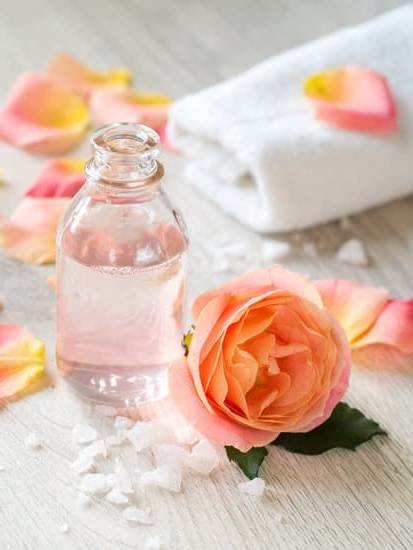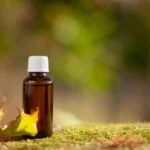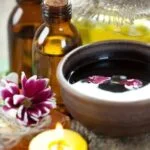Aromatherapy is a centuries-old practice that harnesses the power of essential oils to promote physical and mental well-being. The use of aromatherapy oils in diffusers has become increasingly popular due to its convenience and effectiveness in creating a relaxing atmosphere. But can you use aromatherapy oils in a diffuser? In this article, we will explore this question and provide you with all the information you need to know about using essential oils in diffusers.
Before delving into the compatibility of aromatherapy oils with diffusers, it’s crucial to understand what exactly a diffuser is. A diffuser is a device that disperses essential oils into the air, allowing their therapeutic properties to be inhaled or absorbed by the body. There are various types of diffusers available in the market, including ultrasonic diffusers, nebulizing diffusers, and heat-based diffusers. Each type operates differently and offers different benefits.
When it comes to using aromatherapy oils in a diffuser, not all essential oils are created equal. Some essential oils are well-suited for diffusion, while others may cause allergies or irritation when released into the air.
Additionally, factors like viscosity and volatility play a role in determining which oils are suitable for use with diffusers. In the following sections of this article, we will delve deeper into this topic and guide you on how to choose the right aromatherapy oils for your specific needs.
By understanding the concept of aromatherapy and its benefits, you can embark on a journey towards improved well-being through the use of essential oil diffusion. So let’s dive into the intricacies of using aromatherapy oils in a diffuser and uncover how this practice can enhance your overall health and wellness.
What Is a Diffuser
A diffuser is a device that disperses essential oils into the air, allowing you to enjoy the benefits of aromatherapy. There are several types of diffusers available on the market, each with its own unique way of operating.
One popular type of diffuser is the ultrasonic diffuser. This type uses ultrasonic vibrations to break down the essential oils into microscopic particles, which are then released into the air as a fine mist. Ultrasonic diffusers are known for their ability to preserve the integrity of the oils and provide a continuous diffusion for an extended period of time.
Another common type of diffuser is the nebulizer. Unlike ultrasonic diffusers, nebulizers do not require water or heat to operate. Instead, they use pressurized air or oxygen to atomize the essential oils into tiny particles, which are then expelled into the air as a concentrated mist. Nebulizers are often preferred by individuals who desire a strong and immediate aroma.
Evaporative diffusers, on the other hand, rely on natural evaporation to disperse essential oils into the air. These diffusers typically consist of a pad or filter that is soaked in essential oil and then exposed to airflow through a fan or other means. As the air passes over the pad, it carries away the aromatic molecules and spreads them throughout your space.
Each type of diffuser has its own advantages and considerations when it comes to compatibility with aromatherapy oils. Some essential oils may be suitable for all types of diffusers, while others may have certain limitations. It’s important to consult with your healthcare provider or refer to specific guidelines provided by reputable sources when selecting which oils to use in your chosen type of diffuser.
In summary, there are various types of diffusers available, including ultrasonic, nebulizer, and evaporative diffusers. Understanding the differences between these types of diffusers and how they work can help you select the best one for your aromatherapy needs.
Compatibility of Aromatherapy Oils With Diffusers
Aromatherapy is a holistic healing practice that utilizes the natural and therapeutic properties of essential oils for physical, mental, and emotional well-being. One popular method of experiencing aromatherapy is by using a diffuser, which disperses the essential oils into the air to create a pleasant and aromatic atmosphere. However, not all essential oils are compatible with diffusers, and it’s important to understand which ones can be safely used.
When it comes to choosing essential oils for use in a diffuser, there are several factors to consider. First and foremost, it’s crucial to ensure that the essential oils you are using are 100% pure and high quality. Synthetic or adulterated oils may contain harmful chemicals that can be harmful when inhaled. Look for reputable brands that provide detailed information about the sourcing and production processes of their essential oils.
Furthermore, certain essential oils may have different properties or effects when diffused compared to other methods of application. Some common essential oils that are generally safe for diffusing include lavender, eucalyptus, peppermint, lemon, and tea tree.
However, it’s important to note that not all essential oils are suitable for every individual or specific health condition. If you have any existing health concerns or sensitivities, it’s advisable to consult with a qualified aromatherapist or healthcare professional before using specific essential oils in your diffuser.
In addition to the type of essential oil used in a diffuser, it’s also important to consider personal preferences when selecting aromas for diffusion. Different scents can evoke different moods and emotions, so choose scents that you find pleasing and beneficial for your needs. It may be helpful to experiment with different combinations of essential oils to find the blends that work best for you.
Overall, using aromatherapy oils in a diffuser can greatly enhance your well-being by creating a soothing environment and providing various therapeutic benefits. As long as you choose high-quality essential oils and consider individual factors, diffusing aromatherapy oils can be a safe and effective way to enjoy their benefits.
Benefits of Using Aromatherapy Oils in a Diffuser
Aromatherapy oils have been used for centuries as a natural way to promote relaxation, improve mood, and support overall well-being. One popular method of enjoying the benefits of these oils is through the use of a diffuser. Diffusers are devices that disperse essential oils into the air, allowing their aromatic compounds to be inhaled and absorbed by the body. This section will discuss the therapeutic effects and advantages of using aromatherapy oils in a diffuser.
1. Improved mood and relaxation: Aromatherapy oils have the power to influence our emotions and create a calming or uplifting atmosphere. Diffusing essential oils can help reduce stress and anxiety, promote relaxation, and create a positive ambiance in your home or workspace. Oils like lavender, chamomile, and bergamot are known for their soothing properties and can help create a peaceful environment.
2. Enhanced sleep quality: Many people struggle with falling asleep or staying asleep throughout the night. Diffusing certain essential oils before bed can help promote better sleep quality. Oils like lavender, vetiver, and cedarwood have relaxing properties that can help calm the mind and prepare the body for restful sleep.
3. Air purification: In addition to their aromatic benefits, many essential oils also possess antimicrobial properties that can help purify the air in your surroundings. When diffused in the air, these oils can help kill airborne bacteria, viruses, and other pathogens that may be present in your space. Some popular essential oils with antibacterial properties include tea tree oil, eucalyptus oil, and peppermint oil.
By using aromatherapy oils in a diffuser, you can enjoy these therapeutic effects while also benefiting from their natural fragrance. Diffusers come in various types such as ultrasonic diffusers, nebulizing diffusers, heat diffusers etc. each with its own unique mechanism to disperse essential oil particles into the air effectively. Regardless of the specific diffuser you choose, it is important to use high-quality, pure essential oils that are compatible with diffusers.
Step-by-Step Guide on Using Aromatherapy Oils in a Diffuser
Using aromatherapy oils in a diffuser is a popular and effective way to enjoy the therapeutic benefits of essential oils. A diffuser is a device that disperses essential oils into the air, creating a pleasant and soothing ambiance in any space. If you’re new to using aromatherapy oils in a diffuser, here is a step-by-step guide on how to properly use them.
1. Choose the right essential oils: It’s important to select high-quality essential oils that are specifically formulated for aromatherapy. Different essential oils have different properties and effects, so choose ones that align with your desired outcome. For example, lavender oil can promote relaxation and sleep, while peppermint oil can help with mental clarity and focus.
2. Determine the appropriate amount: Most diffusers come with guidelines for how many drops of essential oil to use based on the size of the room or the capacity of the diffuser. Generally, 3-5 drops of essential oil per 100ml of water is a good starting point. However, you can adjust the amount based on your personal preference and the strength of the scent you desire.
3. Fill the diffuser with water: Before adding any essential oils, fill your diffuser with clean tap water up to its maximum fill line. Avoid overfilling as it may cause leakage or affect the diffusion process.
4. Add the essential oil drops: Once you’ve filled your diffuser with water, add the desired number of drops of essential oil directly into the water reservoir. You can mix different oils together for customized blends or use single-note oils for specific benefits.
5. Set up and start your diffuser: Follow the manufacturer’s instructions on how to assemble and operate your specific diffuser model. Typically, you’ll need to place a lid or cover on top of the water reservoir, plugin your diffuser, and press the power button or switch to start it.
6. Adjust settings and enjoy: Many diffusers come with various settings for mist intensity, timer options, and LED lights. Adjust these settings according to your preferences and let the diffuser work its magic. Take deep breaths and allow the aroma to fill the room, creating a calming and refreshing atmosphere.
By following this step-by-step guide, you can easily and effectively use aromatherapy oils in a diffuser to create a therapeutic environment that suits your needs. Experiment with different essential oils and blends to discover what works best for you and enjoy the many benefits of aromatherapy in your daily life.
Best Practices for Diffusing Aromatherapy Oils
Choosing the Right Essential Oils
When it comes to diffusing aromatherapy oils, it’s important to choose the right essential oils for the desired effect. Different oils have different properties and can provide various benefits. For example, lavender oil is known for its calming and relaxing effects, while eucalyptus oil has a refreshing and invigorating scent that can help with congestion and respiratory issues.
To determine which essential oils to use in your diffuser, consider your specific needs or preferences. Are you looking for a scent to uplift your mood or promote better sleep? Or do you want to alleviate symptoms of allergies or improve focus and concentration? Researching the different properties of essential oils can help you make an informed decision about which ones will best suit your needs.
Experiment With Oil Combinations
Creating your own blends of essential oils can be a fun and creative way to enhance the benefits of aromatherapy. Certain oils work well together and can complement each other’s properties. For example, mixing citrusy scents like lemon or orange with floral notes like rose or lavender can create an energizing yet soothing aroma.
Experimenting with different combinations allows you to personalize your aromatherapy experience and find the perfect blend that suits your preferences. Keep track of any successful combinations that you come across so that you can recreate them in the future.
Adjusting Diffuser Settings
To maximize the effectiveness of aromatherapy oils in a diffuser, it’s important to understand how to properly adjust the settings on your device. Most diffusers have different time settings and mist intensity options that allow you to control the amount of aroma released into the air.
For example, if you’re using your diffuser in a smaller room, such as a bedroom, you may want to set it on a lower mist intensity setting so as not to overpower the space. On the other hand, if you’re using the diffuser in a larger living room or open area, you may want to increase the mist intensity for a more noticeable fragrance.
Experimenting with the settings and finding what works best for your preferences can greatly enhance your aromatherapy experience. Keep in mind that different oils may require different settings in order to release their full aroma and therapeutic benefits.
By following these best practices and taking the time to explore different scents and combinations, you can make the most of your aromatherapy oils in a diffuser and truly enjoy the benefits they have to offer.
Safety Precautions When Using Aromatherapy Oils in a Diffuser
Aromatherapy can be a wonderful addition to your wellness routine, offering a wide range of benefits for the mind, body, and spirit. When using aromatherapy oils in a diffuser, it is important to keep safety in mind to ensure a positive and safe experience. This section will highlight important safety measures and potential hazards to be aware of when using aromatherapy oils in a diffuser.
Firstly, it is crucial to remember that essential oils are highly concentrated substances and should be treated with caution. Always read the instructions provided by the manufacturer of your diffuser carefully before use. Some diffusers may have specific guidelines for diluting essential oils or recommend certain types of oils to avoid due to their potential risks.
Additionally, certain individuals may have sensitivities or allergies to specific essential oils. Before using any new oil in your diffuser, it is recommended to perform a patch test on a small area of skin before applying it more widely or inhaling it through the diffuser. If you experience any negative reactions such as skin irritation, redness, or difficulty breathing, discontinue use immediately and seek medical advice if necessary.
It is also important to note that some essential oils may not be suitable for use around pets or young children. Certain oils can be toxic or irritating to animals, while others may cause respiratory issues in young children with developing lungs. Research the specific essential oil you are considering using and consult with a veterinarian or pediatrician if you have any concerns about its safety.
In summary, practicing safety when using aromatherapy oils in a diffuser is crucial for an enjoyable and beneficial experience. By following the manufacturer’s instructions, performing patch tests before use, and being mindful of potential hazards concerning pets and children, you can create a safe environment while enjoying the therapeutic effects of aromatherapy.
| Important Safety Measures | Potential Hazards |
|---|---|
| Read and follow manufacturer’s instructions | Strong essential oil concentration |
| Perform patch tests before use | Sensitivities or allergies to specific oils |
| Avoid using certain oils around pets or young children | Potential toxicity or respiratory issues for pets and children |
Alternative Methods of Enjoying Aromatherapy Oils
Topical Application
In addition to diffusing essential oils, another popular method of enjoying aromatherapy oils is through topical application. This involves directly applying the essential oil onto the skin, allowing it to be absorbed for various therapeutic benefits. Topical application can be done by diluting the essential oil with a carrier oil, such as coconut oil or almond oil, to reduce the risk of skin irritation.
When applying aromatherapy oils topically, it is important to consider the specific needs and sensitivities of your skin. Some essential oils may cause irritation or allergic reactions in certain individuals, so it is recommended to perform a patch test before applying them to larger areas of the body. It is also advised to follow proper dilution guidelines and use only high-quality, pure essential oils.
Inhalation
Another way to experience the benefits of aromatherapy oils is through inhalation. Inhalation allows you to directly inhale the scent of the essential oil, which stimulates the olfactory system and can have various psychological and physiological effects.
There are several methods for inhaling aromatherapy oils. One common method is by using a diffuser or vaporizer specifically designed for inhalation purposes. These devices disperse a fine mist or vapor into the air, allowing you to breathe in the aroma of the essential oil. Alternatively, you can add a few drops of essential oil onto a tissue or handkerchief and hold it close to your nose, taking deep breaths to inhale the scent.
It is important to note that when using inhalation as a method of enjoying aromatherapy oils, some essential oils may be too strong or irritating for direct inhalation. In these cases, it is recommended to consult with an experienced aromatherapist who can guide you on appropriate dilution ratios and safe inhalation practices.
Other Methods
Aside from diffusing, topical application, and inhalation, there are other creative ways to enjoy the benefits of aromatherapy oils. Some individuals may choose to add a few drops of essential oil to their bathwater for a relaxing and aromatic bathing experience. Others may prefer to create homemade beauty products or natural cleaning solutions using essential oils.
It is worth mentioning that different essential oils have different properties and specific uses, so it is important to do research or consult with a qualified professional before exploring alternative methods of using aromatherapy oils. With proper knowledge and precautions, you can safely and effectively enjoy the therapeutic benefits of aromatherapy oils in various ways beyond just diffusing.
Conclusion
In conclusion, aromatherapy oils can indeed be used in a diffuser to enjoy their therapeutic benefits. Throughout this article, we have explored the concept of aromatherapy and its numerous advantages for both physical and mental well-being. We have also discussed the different types of diffusers and how they work to disperse essential oils into the air.
Furthermore, we have examined which essential oils are compatible with diffusers and the factors to consider when selecting oils for diffusion. It is important to choose high-quality, 100% pure essential oils that are known for their therapeutic properties. Factors such as scent preference, desired health benefits, and potential allergies or sensitivities should also be taken into consideration.
Using aromatherapy oils in a diffuser can provide various benefits, including relaxation, stress relief, improved sleep quality, enhanced mood, and even respiratory support. The inhalation of these aromatic molecules allows them to enter the body through the respiratory system and have a direct effect on our emotions and overall well-being.
Regardless of the method you choose, incorporating aromatherapy oils into your life can enhance your physical and emotional health in a natural and holistic way. So go ahead, explore the world of aromatherapy oils and discover how they can improve your overall well-being.
Frequently Asked Questions
What Aromatherapy Oils Can You Diffuse?
Aromatherapy oils that can be diffused include a wide range of essential oils extracted from plants and flowers. Some popular choices include lavender, eucalyptus, peppermint, lemon, and tea tree oil. These oils are known for their therapeutic properties and delightful scents.
However, it’s important to note that not all essential oils are safe for diffusing, as some may cause irritation or allergic reactions. It is always best to research and consult reliable sources or a qualified aromatherapist before diffusing any specific oil.
Do You Have to Use a Carrier Oil With Essential Oils in a Diffuser?
While it is not necessary to use a carrier oil with essential oils in a diffuser, many people choose to do so for various reasons. A carrier oil is used to dilute the concentration of essential oils before applying them topically on the skin.
When used in a diffuser, carrier oils serve different purposes such as extending the lifespan of the scent by slowing down evaporation or preventing damage to certain types of diffusers that may be sensitive to undiluted essential oils. However, if you are using an ultrasonic diffuser that uses water as a base, you don’t need a carrier oil since the water already functions as the diluting agent.
Can You Put Any Fragrance in a Diffuser?
You cannot put any fragrance in a diffuser indiscriminately because not all fragrances are suitable or safe for use in a diffuser. Diffusers are typically designed for use with pure essential oils, which are extracted directly from plants and possess therapeutic qualities. Synthetic fragrances or perfume oils may contain ingredients that can potentially harm your health when dispersed into the air through a diffuser.
Additionally, synthetic fragrances can leave residue on the interior parts of the diffuser and affect its functionality over time. Therefore, it is recommended to only use high-quality essential oils specifically formulated for diffusion in order to have an optimal aromatic experience while maintaining safety and preserving the lifespan of your diffuser.

Are you looking for a natural way to improve your health and wellbeing?
If so, aromatherapy may be the answer for you.





